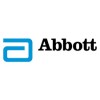Filter interviews by
Cradle Life Sciences Interview Questions and Answers
7 Interview questions
Nuclear power plants have the minimum running cost.
Nuclear power plants have low fuel costs as they use uranium, which is inexpensive and abundant.
They require less fuel compared to fossil fuel power plants.
Nuclear power plants have high initial construction costs but lower operating costs in the long run.
Renewable energy sources like solar and wind have no fuel costs, but their initial setup costs are higher than...
The hydroelectric power plant has the highest area required.
Hydroelectric power plants require large areas of land for reservoirs and dams.
The area required for a power plant depends on factors such as the size of the reservoir and the capacity of the plant.
Other types of power plants like solar or wind may require less land area compared to hydroelectric plants.
Examples of large hydroelectric power plants include...
The unit of magnetic flux is the Weber (Wb).
The unit of magnetic flux is named after the German physicist Wilhelm Eduard Weber.
One Weber is equal to one Tesla multiplied by one square meter.
The Weber is a derived unit in the International System of Units (SI).
The electrodes used in arc heating are typically made of tungsten or carbon.
Tungsten and carbon are commonly used materials for arc heating electrodes.
Tungsten electrodes are preferred for high-temperature applications.
Carbon electrodes are suitable for lower temperature operations.
Other materials like graphite or metal alloys may also be used depending on the specific requirements.
A transformer is an electrical device that transfers electrical energy between two or more circuits through electromagnetic induction.
Transformers work on the principle of electromagnetic induction.
They consist of two or more coils of wire, known as windings, which are wound around a common magnetic core.
The primary winding is connected to the input voltage source, while the secondary winding is connected to the l...
The unit of capacitance is the farad (F).
The unit of capacitance measures the ability of a capacitor to store charge.
It is named after the English physicist Michael Faraday.
Common subunits of capacitance include microfarads (μF) and picofarads (pF).
The unit of resistance is ohm (Ω).
Resistance is the measure of opposition to the flow of electric current.
The unit of resistance is named after the German physicist Georg Simon Ohm.
Resistance is denoted by the symbol 'R' and is measured using an ohmmeter.
Common examples of resistance include resistors in electronic circuits and electrical wires.
Resistance can be calculated using Ohm's Law: R = V/I, where R is resi...
Cradle Life Sciences Interview Experiences
3 interviews found
I applied via Job Portal

(7 Questions)
- Q1. What is the unit of capacitance
- Ans.
The unit of capacitance is the farad (F).
The unit of capacitance measures the ability of a capacitor to store charge.
It is named after the English physicist Michael Faraday.
Common subunits of capacitance include microfarads (μF) and picofarads (pF).
- Q2. Working principle of Transformer?
- Ans.
A transformer is an electrical device that transfers electrical energy between two or more circuits through electromagnetic induction.
Transformers work on the principle of electromagnetic induction.
They consist of two or more coils of wire, known as windings, which are wound around a common magnetic core.
The primary winding is connected to the input voltage source, while the secondary winding is connected to the load.
W...
- Q3. Which power plant has Minimum running cost ?
- Ans.
Nuclear power plants have the minimum running cost.
Nuclear power plants have low fuel costs as they use uranium, which is inexpensive and abundant.
They require less fuel compared to fossil fuel power plants.
Nuclear power plants have high initial construction costs but lower operating costs in the long run.
Renewable energy sources like solar and wind have no fuel costs, but their initial setup costs are higher than nucl...
- Q4. Which power plant has highest area recruired?
- Ans.
The hydroelectric power plant has the highest area required.
Hydroelectric power plants require large areas of land for reservoirs and dams.
The area required for a power plant depends on factors such as the size of the reservoir and the capacity of the plant.
Other types of power plants like solar or wind may require less land area compared to hydroelectric plants.
Examples of large hydroelectric power plants include the ...
- Q5. The unit of magnetic Flux?
- Ans.
The unit of magnetic flux is the Weber (Wb).
The unit of magnetic flux is named after the German physicist Wilhelm Eduard Weber.
One Weber is equal to one Tesla multiplied by one square meter.
The Weber is a derived unit in the International System of Units (SI).
- Q6. The arc heating , the electrodes are made of?
- Ans.
The electrodes used in arc heating are typically made of tungsten or carbon.
Tungsten and carbon are commonly used materials for arc heating electrodes.
Tungsten electrodes are preferred for high-temperature applications.
Carbon electrodes are suitable for lower temperature operations.
Other materials like graphite or metal alloys may also be used depending on the specific requirements.
- Q7. Unit of Resistance
- Ans.
The unit of resistance is ohm (Ω).
Resistance is the measure of opposition to the flow of electric current.
The unit of resistance is named after the German physicist Georg Simon Ohm.
Resistance is denoted by the symbol 'R' and is measured using an ohmmeter.
Common examples of resistance include resistors in electronic circuits and electrical wires.
Resistance can be calculated using Ohm's Law: R = V/I, where R is resistanc...
Interview Preparation Tips
- Electrical related
I applied via Referral and was interviewed before Feb 2021. There were 3 interview rounds.
(1 Question)
- Q1. Some questions about it
(3 Questions)
- Q1. What are your salary expectations?
- Q2. Share details of your previous job.
- Q3. Tell me about yourself.
(1 Question)
- Q1. About location and some other questions
Interview Preparation Tips
I applied via Company Website and was interviewed before Apr 2020. There were 3 interview rounds.
Interview Questionnaire
2 Questions
- Q1. Mobilization strategy
- Q2. Business Operation planning and execution
Interview Preparation Tips
Top trending discussions






Interview questions from similar companies

I applied via Recruitment Consulltant and was interviewed in Oct 2021. There were 3 interview rounds.

(1 Question)
- Q1. Personal details related question. Questions related to previous experience what details i mentioned in my resume. Then one case study.
(1 Question)
- Q1. Personal details and notice period discussion.
Interview Preparation Tips

I applied via Walk-in and was interviewed before Oct 2022. There were 2 interview rounds.

(3 Questions)
- Q1. What is PH? And normality,malarity
- Ans.
PH is a measure of acidity or alkalinity of a solution. Normality and molarity are units of concentration in chemistry.
PH stands for potential of hydrogen and measures the acidity or alkalinity of a solution on a scale of 0 to 14.
Normality is a measure of concentration in chemistry, representing the number of equivalents of a substance per liter of solution.
Molarity is another measure of concentration, representing the...
- Q2. How many people in there your house?
- Q3. Are you comfortable in night shift and rotation shift for work?
Interview Preparation Tips
- pH, normality malarity,
- Cipla products manufactured name

I applied via Job Fair and was interviewed in Mar 2023. There were 2 interview rounds.

(8 Questions)
- Q1. Out of specifications Deviation handling procedure Software uses
- Ans.
The out of specifications deviation handling procedure involves identifying, documenting, investigating, and resolving any deviations from specifications in software.
Identify the deviation from specifications in the software
Document the deviation with details such as date, time, and nature of the deviation
Investigate the root cause of the deviation
Implement corrective actions to resolve the deviation and prevent recurr...
- Q2. Chromatography HPLC Calibration and trouble shooting.
- Ans. Calibration details Trouble shooting peak merging,peak splitting
- Q3. Data review process Raw material, Finished product
- Ans. Verified the all data Chromatography review data
- Q4. Stability guidelines
- Ans. ICH GUIDELINES
- Q5. Awareness, development training of new upcoming employees and junior
- Q6. Out of trends specifications criteria
- Q7. Audit preparation readiness
- Ans. Awareness and initial checklist details preparation
- Q8. Microbiology training and awareness
Interview Preparation Tips
Advanced technologies and techniques

I applied via Approached by Company and was interviewed before Dec 2022. There were 4 interview rounds.

Asked about cement plant operations & troubleshooting problems in your career.
(1 Question)
- Q1. Cement plant operation related
(1 Question)
- Q1. Personal introduction & salary negotiation

Quality Assurance/Quality Control Manager Interview Questions & Answers
Cipla Industriesposted on 19 Nov 2020
Interview Questionnaire
1 Question
- Q1. What is the work of quality control dipartment?
- Ans.
Quality control department ensures that products or services meet the required standards and specifications.
Develop and implement quality control procedures
Inspect and test products or services to ensure they meet quality standards
Identify and resolve quality-related issues
Train employees on quality control procedures
Maintain records of quality control activities
Collaborate with other departments to improve quality
Ensu...

Interview Questionnaire
1 Question
- Q1. Company should co ordinate & co operate with all employees
Interview Preparation Tips
I applied via Naukri.com and was interviewed before Sep 2021. There was 1 interview round.
(1 Question)
- Q1. They will take very short type of interview with gm.
Interview Preparation Tips
- Marketing
- Previous experience
Cradle Life Sciences Interview FAQs
Tell us how to improve this page.
Interview Questions for Popular Designations
Interview Questions from Similar Companies
Cradle Life Sciences Reviews and Ratings
based on 27 reviews
Rating in categories
|
Operations Manager
4
salaries
| ₹4.5 L/yr - ₹7.5 L/yr |
|
Trainer
4
salaries
| ₹1.2 L/yr - ₹17.5 L/yr |
|
MIS Executive
3
salaries
| ₹0.9 L/yr - ₹2.3 L/yr |
|
Project Coordinator
3
salaries
| ₹2.4 L/yr - ₹3.3 L/yr |
|
Head Operations
3
salaries
| ₹6 L/yr - ₹7.2 L/yr |

Recipharm Pharmaservices

Abbott Nutrition International

Pure & Cure Healthcare

Steadfast Medishield
- Home >
- Interviews >
- Cradle Life Sciences Interview Questions










